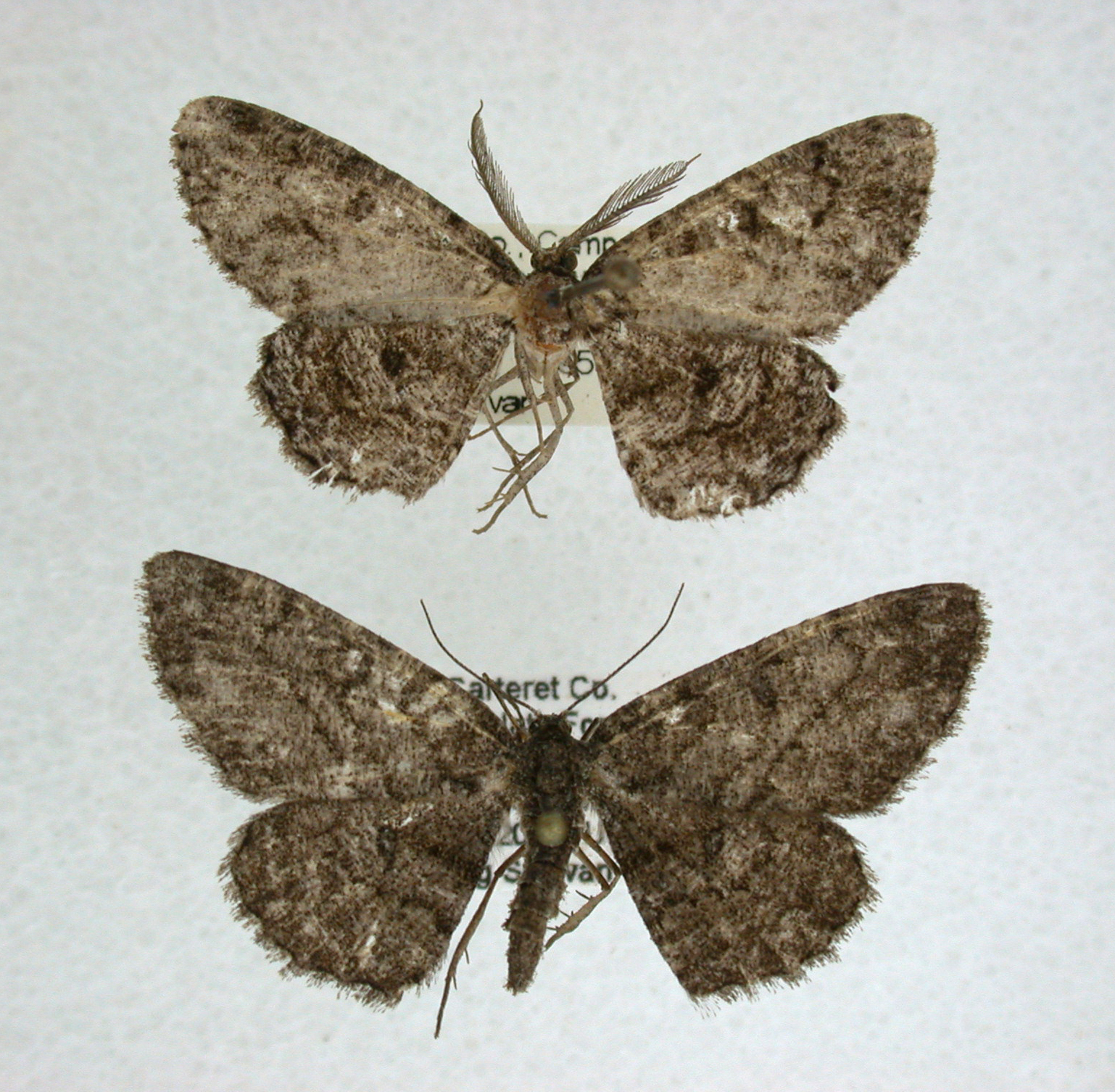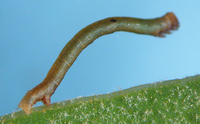Identification
Field Guide Descriptions: Online Resources: MPG , BugGuide , iNaturalist , Google , BAMONA , GBIF , BOLD Technical Description, Adults: Forbes (1948); Rindge (1954); Schweitzer et al. (2011)Technical Description, Immature Stages: Forbes (1948); Wagner et al. (2002); Schweitzer et al. (2011)
Adult Markings: A dark, brownish-black Hypomecis. Forbes (1948) and Rindge (1974) described buchholzaria as being darker than the other species in this genus; Rindge also noted that the lines and spots were less constrasting and more poorly developed in buchholzaria and the undersides of the wings particularly darker than the others. However, a very black form of the umbrosaria/gnopharia complex is fairly common in the Sandhills and Coastal Plain that may, in fact, be even darker than is typical for buchholzaria. Forbes mentioned that buchholzaria has a violet tinge missing in the other species, but Rindge states that this tinge is present only in some individuals. The most reliable characters for separating buchholzaria are the structural features described below.
Adult Structural Features: Males lack a fovea on the forewing (Rindge, 1973). The relative length of the setae (bristles) located at the end of the tegumen processes (located on either side of the uncus) to the length of the processes themselves are characteristic of each species of Hypomecis. In buchholzaria, the setae are about 1.5 x as long as the processes, whereas the ratio is about equal in umbrosaria/gnopharia and about 2.75 x in longipectinaria (Rindge, 1954; Blanchard and Knudson, 1984. Note that Forbes has Figures 75 and 76 reversed in this regard). Additionally, Forbes (1948) states that male buchholzaria lack a hair pencil on the hind tibiae, which is found in umbrosaria. However, Rindge found that the hair pencil is also lacking in four out of five males in umbrosaria, and therefore cannot be used as reliably as the genitalic differences (see Rindge, 1954, for more details and illustrations concerning the differences in genitalia of both the males and the females in this genus).
Genitalia and other structural photos
Adult ID Requirements: Identifiable only by close inspection of structural features or by DNA analysis.
Immatures and Development: Late instar larvae of both buchholzaria and umbrosaria were described by Forbes (1948) as "mottled light brown or red-brown flecked with yellow". The subdorsal warts were also enlarged on segment A2. Wagner et al. (2002), however, say that the abdomen in buchholzaria lacks warts, unlike the case for umbrosaria. They also state that buchholzaria tends to be tan to rusty-green, with the dorsal and subspiracular stripes broken into spots; in umbrosaria, these stripes are vague but apparently unbroken along the length of the body (see compare the photograph of umbrosaria given in Wagner et al., with that of buccholzaria given in Schweitzer et al., 2011).
Larvae ID Requirements: Identifiable from close inspection of specimens or by DNA analysis.

 »
»


 »
»
